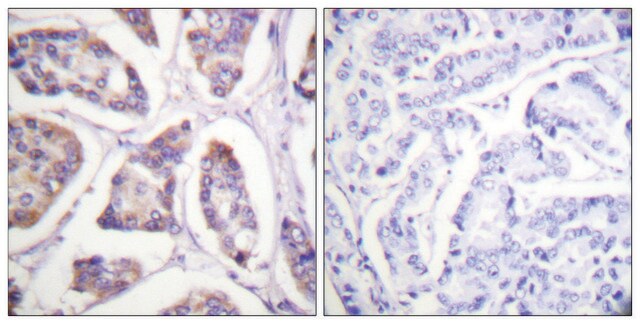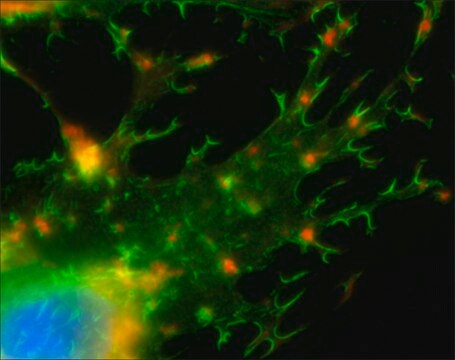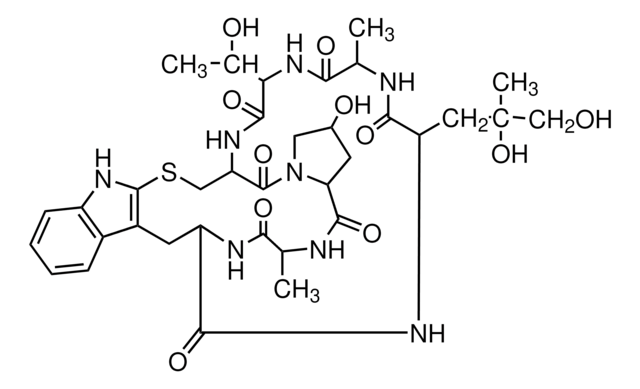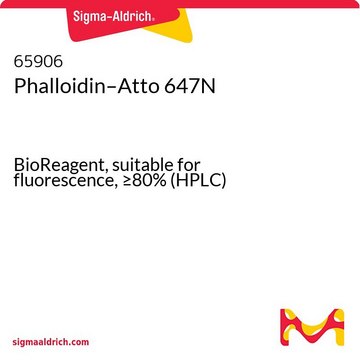Kluczowe dokumenty
49429
Phalloidin–Atto 532
suitable for fluorescence, ≥90.0% (HPLC)
Synonim(y):
Atto 532–Phalloidin
About This Item
Polecane produkty
Poziom jakości
Próba
≥90.0% (HPLC)
producent / nazwa handlowa
ATTO-TEC GmbH
λ
in acetonitrile: water (1:9) (with 0.01% trifluoroacetic acid)
absorpcja UV
λ: 534-540 nm Amax
przydatność
suitable for fluorescence
temp. przechowywania
−20°C
Opis ogólny
Zastosowanie
Informacje prawne
Kod klasy składowania
11 - Combustible Solids
Klasa zagrożenia wodnego (WGK)
WGK 3
Temperatura zapłonu (°F)
Not applicable
Temperatura zapłonu (°C)
Not applicable
Środki ochrony indywidualnej
Eyeshields, Gloves, type N95 (US)
Certyfikaty analizy (CoA)
Poszukaj Certyfikaty analizy (CoA), wpisując numer partii/serii produktów. Numery serii i partii można znaleźć na etykiecie produktu po słowach „seria” lub „partia”.
Masz już ten produkt?
Dokumenty związane z niedawno zakupionymi produktami zostały zamieszczone w Bibliotece dokumentów.
Klienci oglądali również te produkty
Produkty
Barwniki Atto to seria barwników fluorescencyjnych, które spełniają krytyczne potrzeby nowoczesnych technologii fluorescencyjnych.
Nasz zespół naukowców ma doświadczenie we wszystkich obszarach badań, w tym w naukach przyrodniczych, materiałoznawstwie, syntezie chemicznej, chromatografii, analityce i wielu innych dziedzinach.
Skontaktuj się z zespołem ds. pomocy technicznej





